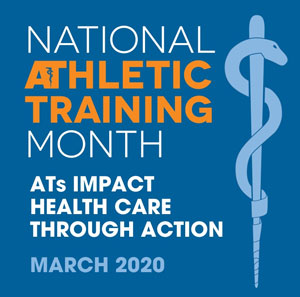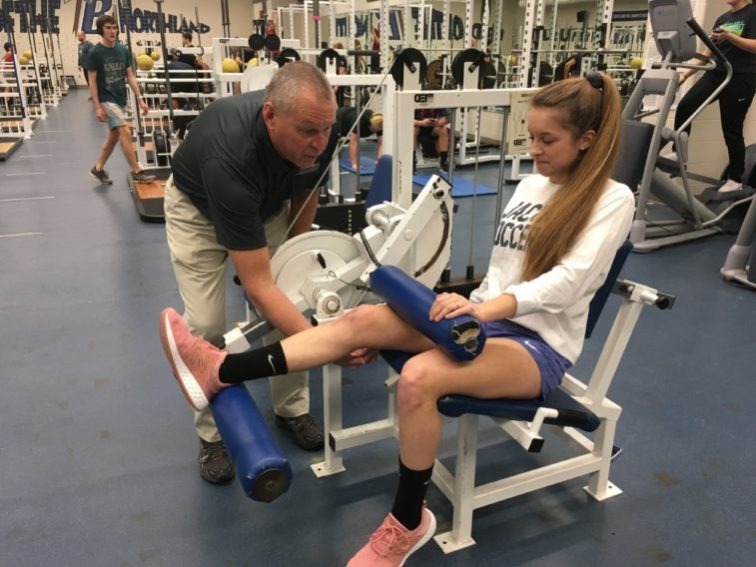Madalyn Willard loves being active. Living on a farm north of Solway, Minnesota, the Bemidji High School senior doesn’t have much free time, but she does enjoy riding her horse, four-wheeling, downhill skiing, hiking, fishing and a variety of other outdoor pursuits.
Willard also enjoys hunting, and last November she climbed into her tree stand during Minnesota’s firearms deer season and shot a large doe.
Climbing that tree, however, was more difficult than usual, as her mobility was hampered by the need to wear a knee brace. Weeks earlier, she tore her anterior cruciate ligament during warmups for the first-round game at the state high school soccer tournament.
“I knew I was done playing sports for a while, but I was told that I couldn’t hurt the knee any more if I went hunting with the brace,” Willard said.
A month after getting her doe, the road to recovery began after a successful surgery to repair the torn ACL. She currently is rehabilitating the knee with the help of Sanford Bemidji orthopedic staff.

Sanford Health athletic trainers serve 86 high schools and 19 colleges and universities in the Upper Midwest.
Among those lending a hand is Sanford Health’s Jon Laakso, who is in his 18th year as the athletic trainer at Bemidji High School. Laakso and Aryn Deshane, Laakso’s partner at BHS, are among four full-time and two part-time Sanford Bemidji athletic trainers who work at area schools, a variety of other venues and for many organizations, including Bemidji Youth Hockey, which hosted more than 350 games this winter.
“We enjoy being in the communities and offering our services,” said Matt Morris, athletic trainer at Sanford Bemidji. He’s also the full-time athletic trainer for Walker-Hackensack-Akeley and Clearbrook-Gonvick high schools in Minnesota.
“We know that people are injured during these events and they don’t know what to do. As a community service, we can provide the initial care and make everybody more comfortable. We are very good at recognizing injuries, initiating treatment and determining the appropriate referrals,” he said.
Trainers as first responders
Laakso said that when Willard came to see him, he suspected a possible ACL injury and sent her to Mark Carlson, M.D. He ordered an MRI that showed the ACL tear and referred her to Jason Caron, M.D., who performed the surgery. Willard now does regular therapy with Laakso and Sanford Bemidji orthopedic therapist Jeff Breyen.
“The toughest part of the rehab is trying to stay faithful (to the process),” Willard said. “But I can see the big picture. I’m waiting for the day to get back to riding my own horse. I would love to get back on now, but I know it will be a while before I can do that.”
Injuries can happen at any time and in any situation, and when they occur during competition, athletic trainers assume the duties of the first responders.
“Basically, we are the EMTs at the athletic events,” Laakso said. “We are the first medical personnel on the scene, so we have to handle the triage and make the early diagnosis.”
When an athlete suffers an injury, returning to practice or to competition is not an option until he or she receives clearance by the trainer.
“Every athlete (coming off an injury) must check in with the trainer each day until he or she is released by us to return to full and unrestricted participation,” Laakso said. “And the coaches appreciate the daily updates we provide and the decisions we make.”
Eliminates guesswork for coach
Among those coaches is Bemidji High School head football coach and activities director Troy Hendricks.
“The best thing with having athletic trainers at our practices and events is that their presence eliminates the guesswork for a coach who is not an expert in the medical field,” Hendricks said. “If an athlete is hurt during a practice or during a game, the coaches do not have to guess if they are healthy enough to return. Instead, we can send the athlete to the trainer and let the trainer make the decision. And what the trainer says is what we do.”
Laakso won’t return an athlete to practice or competition until he is sure that an injury has healed. He understands the importance of competition, but he also realizes that a young athlete’s future takes precedence over any single game or meet.
“I want them to be able to enjoy life after high school,” Laakso said.
“To see someone suffer a major injury, such as Madalyn’s ACL tear, come back smiling during and after the therapy, and be able to live the life they want is very rewarding,” he said. “I love becoming involved with the kids and their families, and watching the kids develop into great human beings is the best part of being a full-time athletic trainer at a school.”
Willard said she and her family appreciate all Caron, Breyen and Laakso have done. Her parents refer to Laakso as her “school dad.”
“I am on the mend from my injury and I’ll be able to do the things I like. The folks wearing Sanford jackets have been a big help to me and to my recovery,” she said.
More stories
- Athletic trainers: In the background but watching
- Athletic trainers engage and challenge
- Athletic trainer not just for college, pro teams: slideshow
…
Posted In Allied Health, Orthopedics, Specialty Care, Sports Medicine
